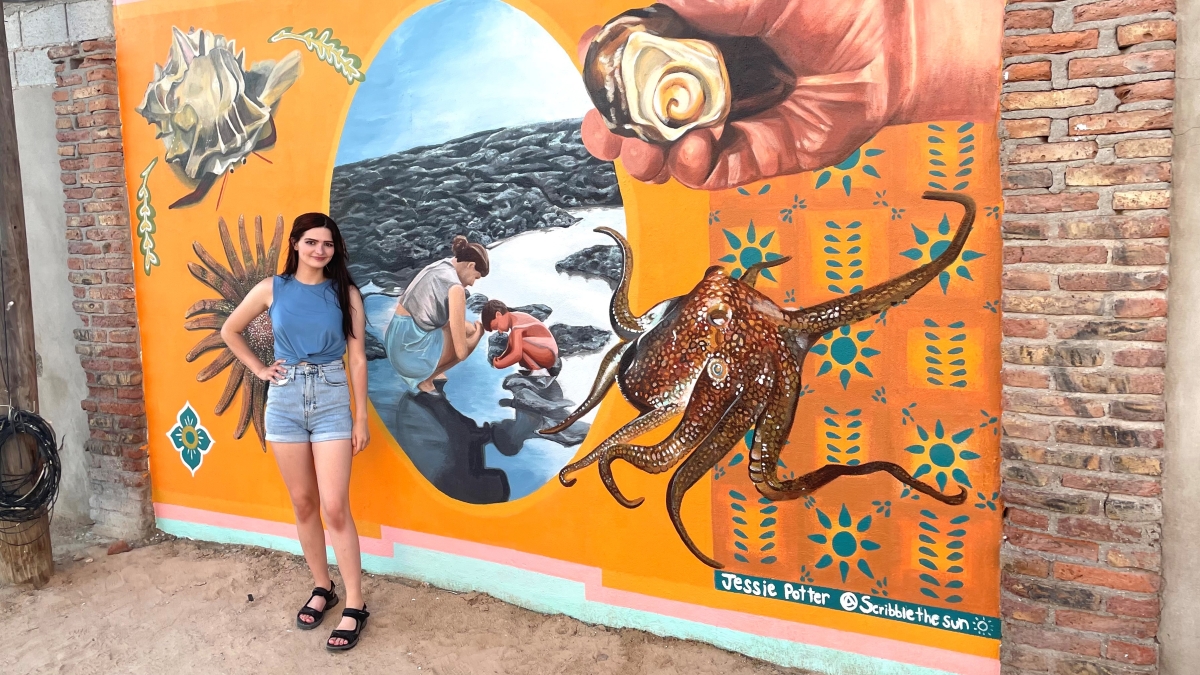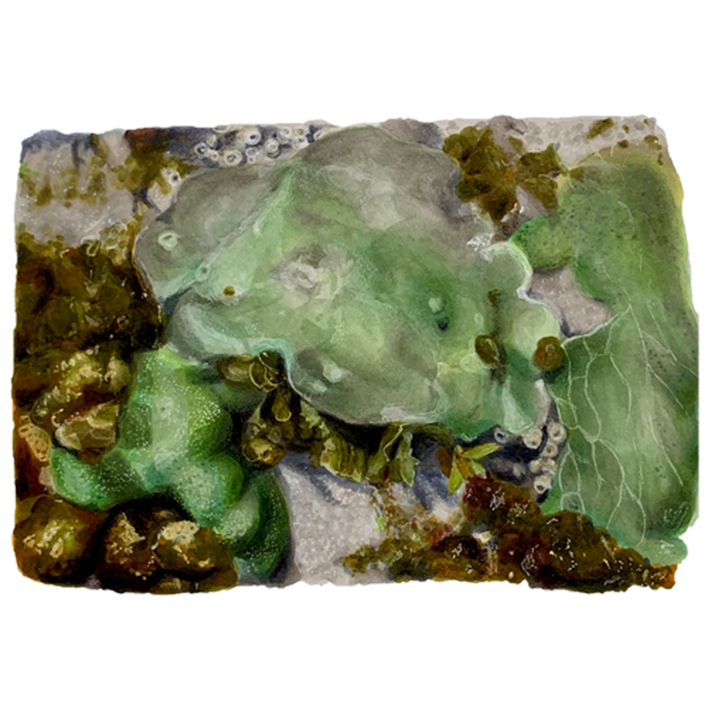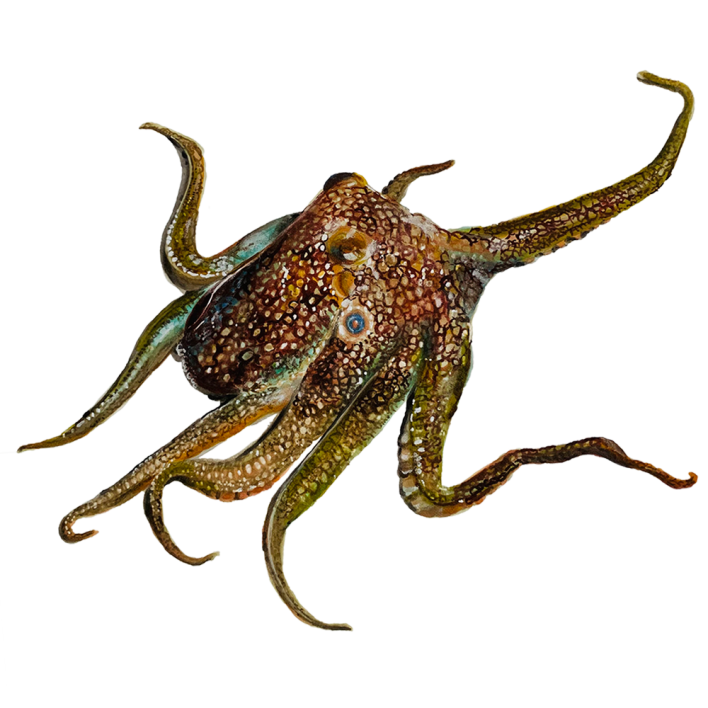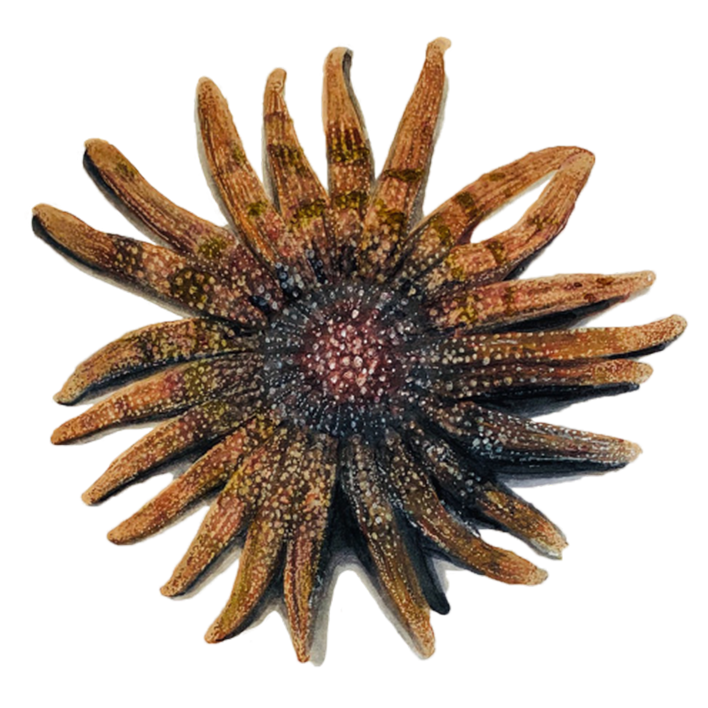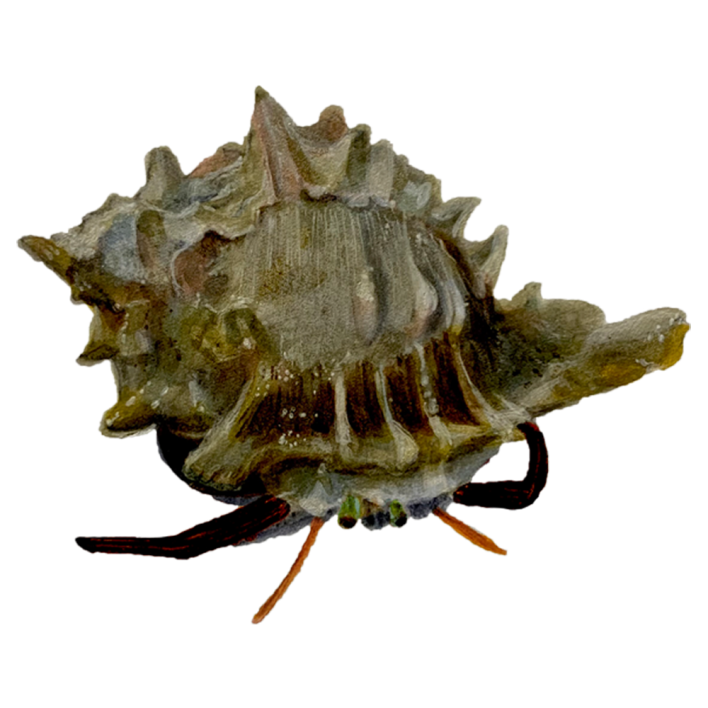Art has always had a place in science. Leonardo da Vinci sketching corpses. Charles Darwin in Tierra del Fuego. John James Audubon and the birds of America. Sir Joseph Banks and everything he laid eyes on.
Now, newly minted Arizona State University graduate Jessica Potter has joined their ranks.
Potter, who recently graduated with a Bachelor of Science in conservation biology and ecology, completed a mural art project in Puerto Peñasco, Mexico, also known as Rocky Point, calling attention to the rich life in the area's tidal pools, those areas between the land and the sea exposed to air at low tide and covered by water at high tide.
Tidal pools provide windows into the sea for everyone. You don’t need a scuba tank or a boat to get to them and admire the rich variety of life. They’re like little towns, teeming with starfish, anemones, clams, fish, sea urchins, snails and octopuses.
Potter has always loved marine biology. Her grandmother read her a book she loved about ocean animals. In school she made newspapers and websites about animals and conservation issues.
A few years ago she went to Rocky Point for a marine biology class taught by Professor Susanne Neuer of the School of Life Sciences. Potter ended up doing her honors thesis on the intertidal ecosystem, including a collaboration with a research organization called the Intercultural Center for the Study of Deserts and Oceans (CEDO).
In addition to her thesis, Potter produced a flyer about tidal pools aimed at tourists, which CEDO printed for World Oceans Day.
With the pandemic in full swing, an honors thesis project was limited. Neuer was in touch with CEDO.
“Then we found this bigger project (to) … create this brochure to educate tourists about the intertidal ecosystems and also about tidepool etiquette, which is how to sort of enjoy your tide pool experience while also doing minimal damage to the ecosystem,” Potter said. “And then from that, that led to doing the mural to sort of reinforce what was taught in the brochure.”
She did the illustrations during the pandemic, working totally remotely.
“When I was doing this project, while I was researching these species, I would also be drawing them,” she said. “It made me feel like I was developing this more personal relationship. You might just quickly Google some photos of these animals, but to spend time looking at them and drawing out all these details, it really felt like it allowed me to establish that closer connection.”
After CEDO saw the drawings Potter did for the brochure, they wanted her to paint the mural.
“I discovered what a talented artist she was,” Neuer said. “She did all of the drawings in the brochure herself, and hence also the request by CEDO that she’d participate in the painting of the mural.”
The mural is on the wall of Manny’s Beach Club, a popular beach bar. The walkway leads to El Mirador Beach, which is a Blue Flag-certified beach, meaning it has achieved high health, environmental and educational standards.
Local residents have seen themselves in the mural.
“A lot of people stopped by to tell me this is what I see every single day looking out on the beach,” Potter said. “'Cause there's a mother and a daughter going tide pooling and looking at all the animals. So they felt that it was a really good depiction of what this area means to them.”
Potter’s dream is to be a scientific illustrator and to find new and creative ways to teach people about local ecosystems and environmental issues.
The projects have opened up the possibilities of her degree.
“I didn't even think about the possibility of combining these two things, because before I was just thinking, 'Well, I'm really interested in environmental science and ecology, so I'll probably just get sort of a research job,' but then this really opened me up to these different opportunities that you can take with a science degree,” she said.
“There's a space for art within science and how we can use art as a tool to connect with people.”
More Science and technology

Lucy's lasting legacy: Donald Johanson reflects on the discovery of a lifetime
Fifty years ago, in the dusty hills of Hadar, Ethiopia, a young paleoanthropologist, Donald Johanson, discovered what would become one of the most famous fossil skeletons of our lifetime — the 3.2…

ASU and Deca Technologies selected to lead $100M SHIELD USA project to strengthen U.S. semiconductor packaging capabilities
The National Institute of Standards and Technology — part of the U.S. Department of Commerce — announced today that it plans to award as much as $100 million to Arizona State University and Deca…

From food crops to cancer clinics: Lessons in extermination resistance
Just as crop-devouring insects evolve to resist pesticides, cancer cells can increase their lethality by developing resistance to treatment. In fact, most deaths from cancer are caused by the…
